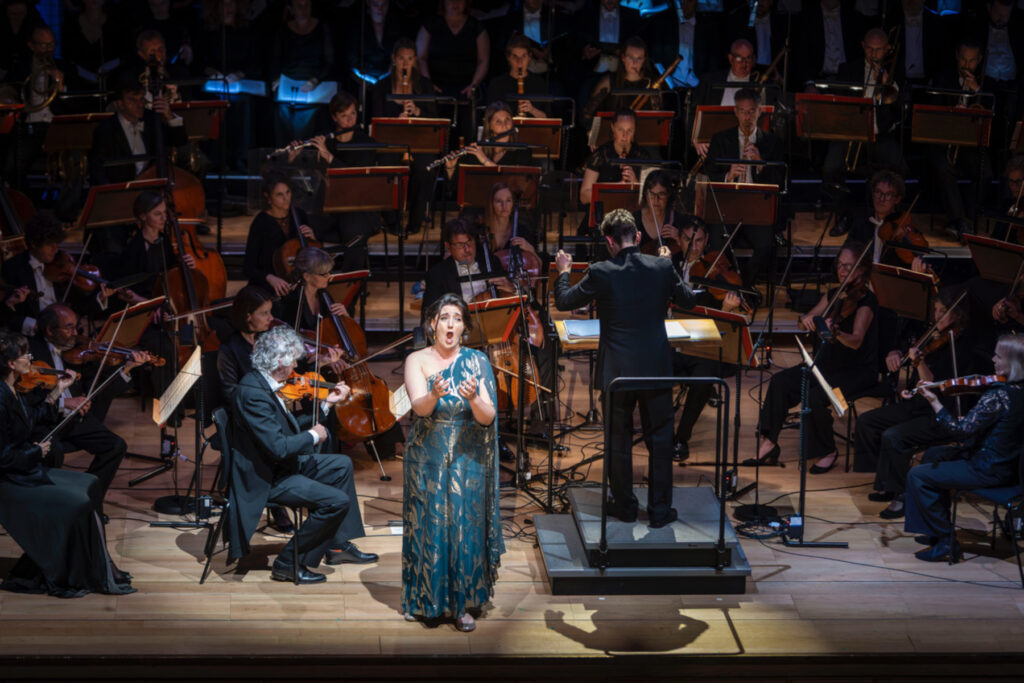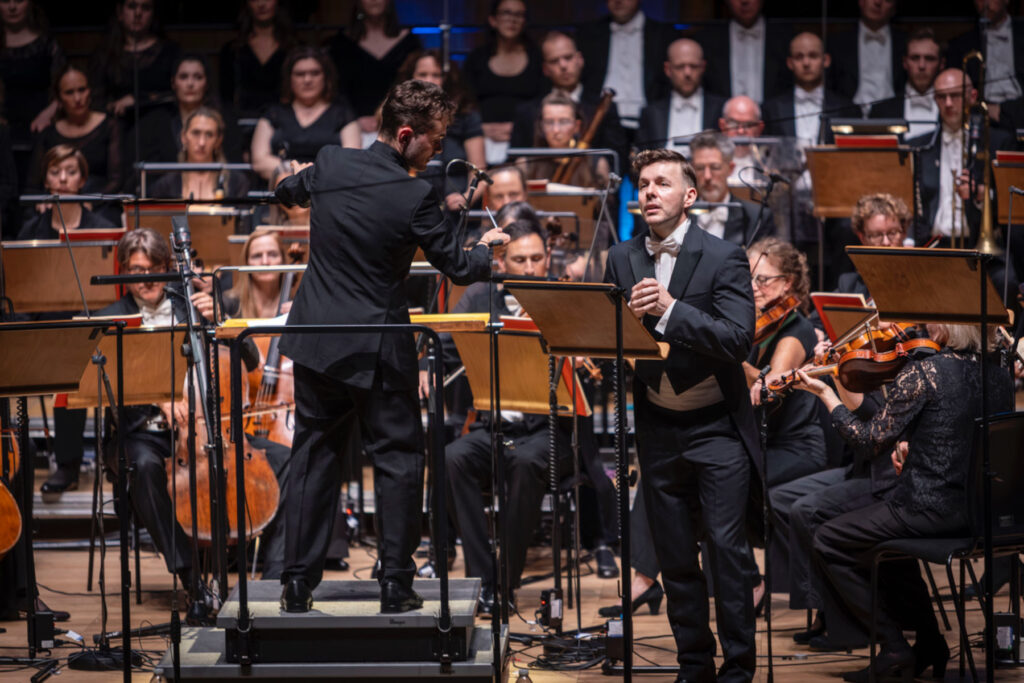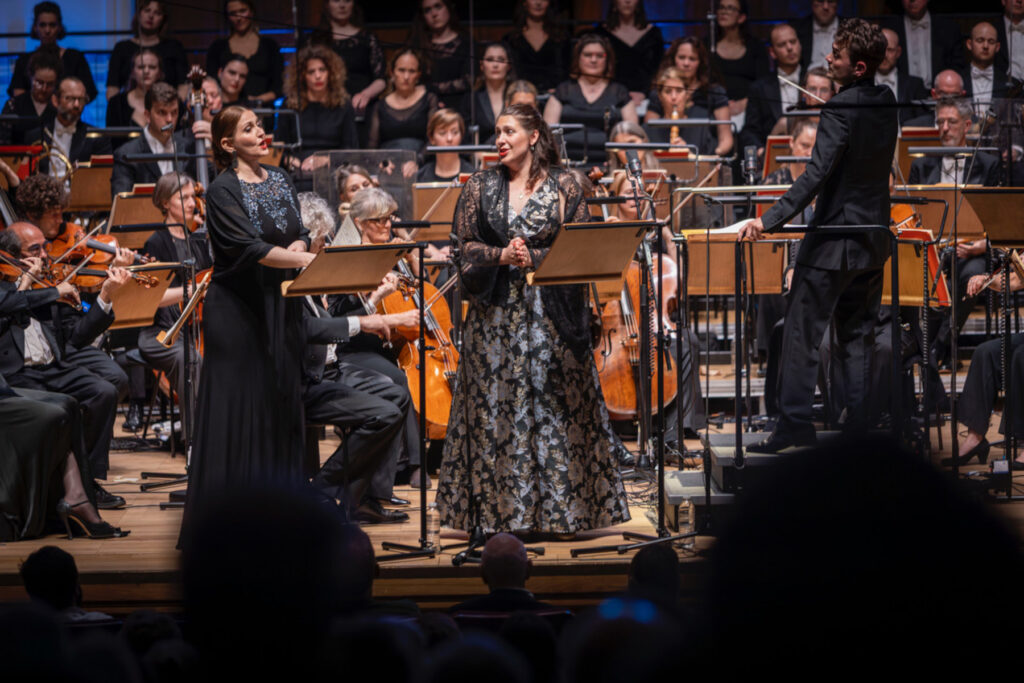It was all going so well for him. He was already a celebrated opera composer, having made opera buffa something of a calling card, and in just 23 years had notched up a total of thirty-nine works for the stage. His most recent opera was widely regarded as his finest yet. And then came what has been termed “the great renunciation”: Rossini never wrote another opera. Speculation about the reasons for his sudden withdrawal have centred around increasing evidence of ill-health, though infirmity didn’t stop Schubert from composing. Had the springs of inspiration simply dried up? We will probably never know for sure. One thing is clear: he always maintained his impish sense of humour. The tale is told that at Meyerbeer’s funeral a minor composer, who had written a funeral march in his honour, approached Rossini for a comment. “I think it would have been better if you had died and Meyerbeer had written a funeral march in your honour” was the response.

Ten years before the overwhelming success of Guillaume Tell, Rossini had experienced an unexpected flop with his tragic opera Ermione, which was withdrawn after only seven performances and never again staged until 1987. Listening to almost an hour of extracts performed by Orchestre Révolutionnaire et Romantique and the Monteverdi Choir, conducted by Jakob Lehmann, I struggled to find musical reasons to account for its neglect. Back in Rossini’s day it was probably too tragic (the murder of a rightful king at the instigation of the heroine was seen as scandalous), too obviously influenced by Gluck and Spontini, and a work in which everybody is obsessively unhappy. In its blend of Classical form and Romantic passion, however, together with all the soap opera-like complications of human relationships, and especially in such a stirring rendition as we had here, I would have been delighted to hear the whole work.
Lehmann has an obvious ear for theatricality. The three imposing chords at the start of the Prelude, underpinned by cymbals, sounded very Beethovenian, with wonderfully delicate pizzicati to follow, a full-throated lament for the state of Troy from the magnificent Monteverdi Choir, and not least the composer’s trademark string crescendo providing all the ingredients for a sparkling start. The precision of the orchestral playing left sufficient space for many of the instrumental details to register, such as the high hunting horns and dominant triangle to accompany the chorus of maidens which opens Scene 2 of Act 1, or in the following scene the exquisite mirroring of Oreste’s “doleful tears” in the sighs of the strings as well as the characterful clarinet playing when he sings of “the devouring flame” within his breast. In the role of Oreste Alasdair Kent’s light lyrical tenor emphasised the torment he struggles to overcome as he sees the object of his heart’s desire, Ermione, in the clutches of his cousin Pirro. A little underpowered at times and not always possessing ideal projection, he nevertheless negotiated both the challenging high tessitura and the unaccompanied coloratura runs with ease, the bel canto tradition being especially evident here.

The Andromaca of Hannah Ludwig was warm and maternal from the start, not least in the Scene 1 aria dedicated to her son (from her earlier union with Hector). Her grief was given added weight by the depth and resonance of her chest tones. Complementing the darker reaches of the score was the sturdy bass of Anthony Robin Schneider as Fenicio.
In commanding form as Ermione was Beth Taylor, seamless in her progress through the registers, a tigress of a character with the ability to snarl superbly, her voice imbued with sharpness in her Act 2 Scene 3 exchange with Oreste when – Lady Macbeth-like – she taunts him with his vacillation and presses a dagger into his hands. In the preceding scene she floated the gentlest of high notes in her deliciously delivered coloratura elements, which made me yearn to hear her in the mad scene from Lucia di Lammermoor. Throughout, the varied colouring of her vowel sounds was testament to her growing authority in the Italian repertoire. All the other comprimario roles were well taken.
If there were any doubts that Rossini had become a prisoner of the profane, these were dispelled by the composition of two sacred works, the Stabat Mater and, one of “the sins of his old age”, the Petite Messe Solennelle (neither little nor solemn). Originally a commission in 1831, the Stabat Mater had a rocky start. A severe attack of lumbago meant that Rossini couldn’t progress beyond six of the planned twelve movements, so he enlisted a former pupil of his to complete the missing half. This external contribution was kept secret until a decade later when the entire work risked being published under his name. At this point Rossini composed a further four movements, bringing the total in the final version to ten.

In his direction of this work, I again noted Lehmann’s ear for instrumental colour: in the soft, high-lying horns at the close of the third movement, the dry, ghostly quality of the period timpani suggesting a death rattle at the start of the fourth movement, the chilling cries of anguish from the woodwind as the bass soloist sings of Jesus being “scourged by the lash”. He marshalled his choral and orchestral forces with verve and at times coruscating energy. What bothered me slightly was his tendency to allow the brass to dominate climaxes in which the majestic voices of the Monteverdi Choir should have had maximum impact. Though this is a work of mixed media, I did also think that his awareness of the devotional aspects was sometimes in short supply. This is, after all, a sacred text dating back to an anonymous Franciscan monk of the 13th century. By contrast, the solo quartet achieved those special moments of inwardness, complete with finely shaded dynamics, in the repeated “Paradisi gloria” of the ninth movement.
In the third movement, “Quis est homo”, there was a warm emotional embrace which came from the two soloists, the soprano of Ana Maria Labin and the mezzo of Hannah Ludwig, magically introduced by muted sotto voce strings. The two voices were especially well matched here, Labin with a lovely legato line and Ludwig providing a strong contrast through darker colouring. I wondered at this point whether Rossini might have been influenced by the heartfelt exchanges between Mozart’s Fiordiligi and Dorabella.
The tenor’s great moment to shine occurs in the second movement, “Cujus animam gementem”, where Rossini comes closest to departing the sacristy for the operatic stage, and which requires the soloist to soar up to a high D flat. Kent was more ingratiating in the softer sections than in fully encompassing the ringing jauntiness of the big melody. I enjoyed Schneider’s rich colouring of the phrase “Juxta crucem” in the sixth movement, where the swinging rhythms of the orchestral accompaniment and the solo quartet were deftly aligned, and he delivered well in his unaccompanied recitative, “Eja Mater”, of the fifth movement.
The nearest this work comes to anything like a Dies irae is in the “Inflammatus et accensus” for soprano and chorus of the penultimate movement. Here, orchestra and chorus were powerfully dramatic, with a creamy top to Laban’s soprano line allowing a hint of religious ecstasy to emerge. This Stabat Mater ends with a choral fugue, crowned here by the Monteverdi Choir on top form.
Who says that career changes have to be limited to those outside the musical world? Rossini is unique amongst all composers in later becoming a celebrated gourmand, turning Duke Orsini’s line in Twelfth Night, “If music be the food of love, play on” into something like “If food be the love of life, eat on”. He gave his name to all kinds of culinary embellishments in the phrase alla Rossini, normally denoting a combination of liver, foie gras and truffles, and represented in all fine dining establishments. Now who’d have thought of that?
Alexander Hall
Rossini
Scenes from Ermione
Stabat Mater
Performers:
Andromaca – Hannah Ludwig; Oreste – Alasdair Kent; Fenicio – Anthony Robin Schneider; Ermione – Beth Taylor; Cefisa – Rebecca Leggett; Cleone – Elinor Rolfe Johnson; Pilade – Xavier Hetherington; Attalo – Marcus Swietlicki
Ana Maria Labin (soprano); Hannah Ludwig (mezzo-soprano); Alasdair Kent (tenor); Anthony Robin Schneider (bass)
Monteverdi Choir; Orchestre Révolutionnaire et Romantique; Jakob Lehmann (conductor)
Cadogan Hall, London, 2 October 2025
Top image: The solo quartet, Jakob Lehmann, Orchestre Révolutionnaire et Romantique, Monteverdi Choir
All photos © Paul Marc Mitchell